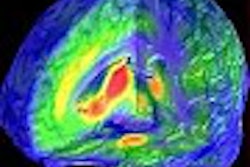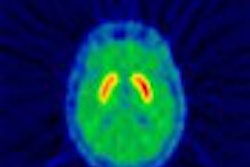About 35% of women with invasive cervical cancer will have recurrent or persistent disease after treatment. However, achieving an early diagnosis of pelvic recurrence of cervical cancer has proven to be difficult. CT and MRI, as well as Pap smears and tumor markers, have fallen short. As a result, researchers from Korea turned to 18F FDG-PET for assessing relapse.
In a retrospective study, Dr. Sang-Young Ryu and colleagues from the department of obstetrics and gynecology at Korea Cancer Center Hospital in Seoul monitored 249 patients every three months, during the first two post-treatment years, and then every six months thereafter for five years. One of Ryu’s co-authors, Dr. Chang-Woon Choi, is from the hospital’s nuclear medicine department.
"18F FDG-PET was recommended as a part of the work-up on all patients with high-risk factors for recurrence such as full-thickness involvement of the cervix, parametrial invasion, lympathic invasion, and positive resection margin," the authors wrote in the Journal of Nuclear Medicine (March 2003, Vol. 44:3, pp. 347-352).
The scans were performed on an Advance scanner (GE Medical Systems, Waukesha, WI), 50 minutes after the injection of 370-555 MBq of 18F-FDG. Images were reconstructed on transaxial, sagittal, and coronal planes. Any positive lesion identified with FDG-PET also was evaluated with CT or MRI and then confirmed by fine-needle aspiration.
The median age of this patient population was 51 years. Nearly 60% were classified as clinical stage Ib and stage IIa according to Fédération Internationale de Gynécologie et d’Obstétrique guidelines. Histologically, 90.7% of the cervical cancer cases were squamous cell carcinoma.
Of the 249 patients with cervical cancer who showed no evidence of disease after treatment, 32.1% showed positive lesions on FDG-PET, the authors reported. Among these 80 patients, 11.2% were histologically or clinically confirmed to have recurrent lesions.
The sensitivity of FDG-PET for detecting cervical cancer recurrence was 90.3% and the specificity was 76.1%. The positive predictive value was 35%; the negative predictive value 98.2%.
"The sensitivity of 18F FDG-PET was relatively high in lesions such as the mediastinum, hilum, chest wall, scarlene lymph node, iliac, spine, and liver; however, it was relatively low in lesions including the lung, retrovesical area, and paraaortic lymph node," the authors stated. "The high negative predictive value in this study suggests that the clinical feasibility of 18F FDG-PET is a method to assure the patients who are anxious about a possible recurrence."
The FDG-PET scans were able to confirm recurrence in patients who showed no evidence of disease on more traditional tests. PET's advantages included its ability to:
- Detect recurrent lesions independent of their size.
- Decipher anatomy despite distortion after surgery or radiation treatment.
- Detect occult recurrent metastasis in lesions found in the vaginal cuff, retrovesical area, and pelvic sidewall.
- Differentiate between fibrosis and recurrence.
The peak detection time was 9-12 months after diagnosis. "(Our) findings suggested that 18F FDG-PET might detect recurrences earlier than historical data with conventional methods," they concluded.
The authors acknowledged that the cost-benefit effects of using FDG-PET still need to be studied. Another major issue that will require analysis is the survival impact of FDG-PET on the treatment of cervical cancer.
By Shalmali PalAuntMinnie.com staff writer
March 27, 2003
Related Reading
PET/CT preferred as whole-body scan for cancer detection, December 6, 2002
Cancer survival rates underestimated, October 14, 2002
Women in rural areas are less likely to undergo cancer screening, July 9, 2002
Copyright © 2003 AuntMinnie.com




















